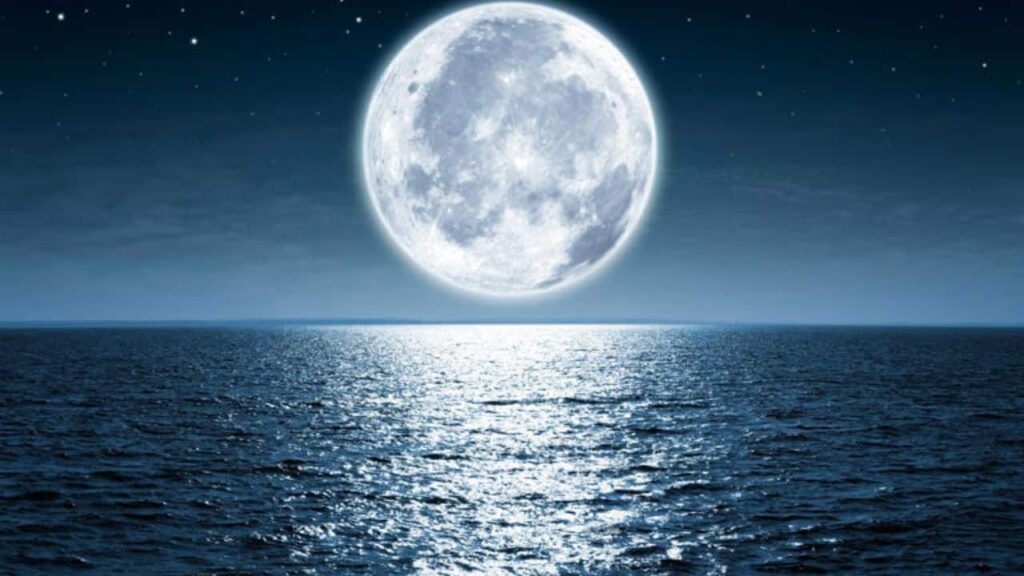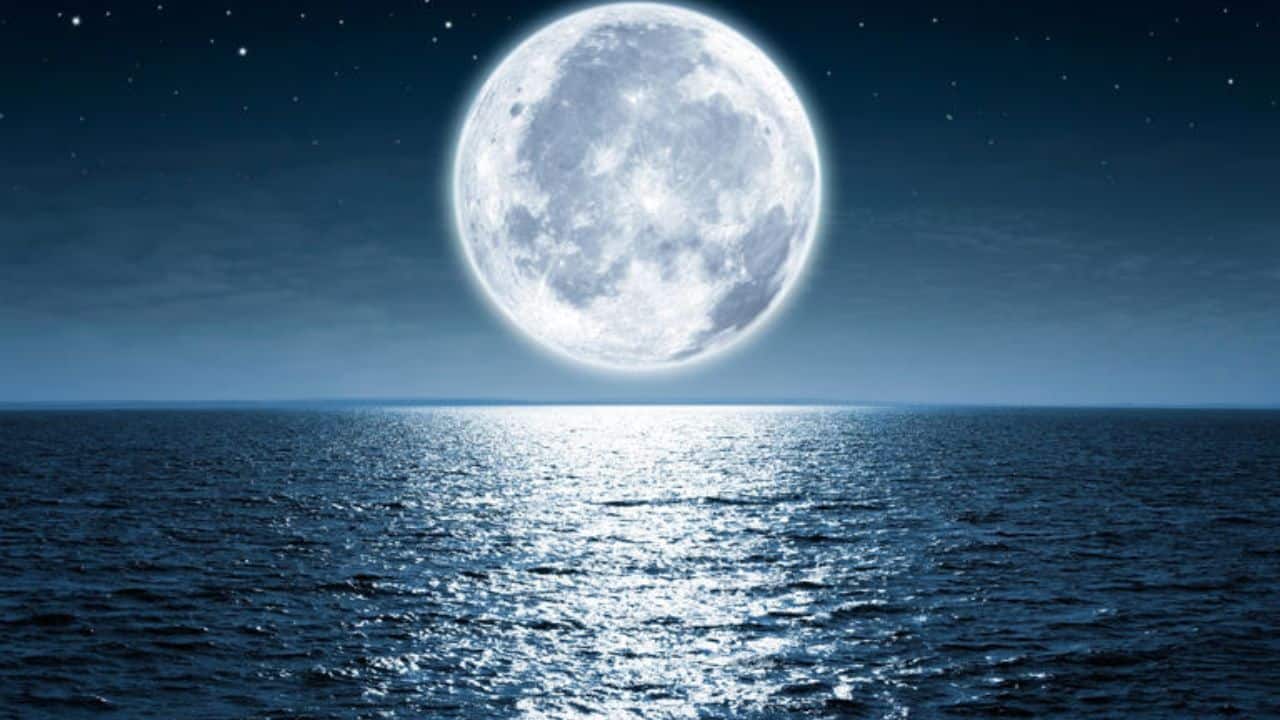Explore the Full Sturgeon Moon 2024 and learn how to see the August Supermoon, the first in a series of four consecutive supermoons. Discover the significance of the Sturgeon Moon, tips for photographing the supermoon, and key details about astronomical events in 2024.
Get ready for the Full Sturgeon Moon in August 2024, the first of four consecutive supermoons. Learn when and where to see it, its significance, and tips for capturing stunning photos of this rare celestial event.

Full Sturgeon Moon 2024: A Guide to the August Supermoon
As the summer of 2024 unfolds, a rare and mesmerizing celestial event is set to captivate skywatchers across the globe: the Full Sturgeon Moon. This August, the night sky will be illuminated by the first in a series of four consecutive supermoons, making it an extraordinary time for both amateur astronomers and casual stargazers alike. This event is not just any full moon; it’s a supermoon, which means it will appear larger and brighter than usual, providing a spectacular view for those fortunate enough to witness it.
The August Supermoon: What Makes It Special?
On August 19, 2024, the Full Sturgeon Moon will make its grand appearance in the night sky. What sets this moon apart from the usual full moons is its status as a supermoon. A supermoon occurs when the full moon coincides with the moon’s closest approach to Earth in its elliptical orbit, a point known as perigee. As a result, the moon appears up to 14% larger and 30% brighter than when it is at its farthest point from Earth, known as apogee. This phenomenon creates a stunning visual experience, as the moon looms larger on the horizon, casting a bright glow across the landscape.
This August supermoon is particularly special because it is the first in a rare series of four consecutive supermoons, a phenomenon that will continue through September, October, and November. Each of these full moons will provide a similar visual spectacle, making this period a highlight of the astronomical calendar.
How to View the August Supermoon
For those eager to witness the Full Sturgeon Moon, timing and location are key. The moon will reach its fullest point at 2:26 p.m. ET on August 19, 2024. However, because the moon will be on the opposite side of the Earth from the United States at that time, viewers will need to wait a few hours until moonrise to enjoy the full display.
On the East Coast of the United States, the supermoon is expected to rise at approximately 8 p.m. local time. It will appear in the east-southeastern sky, gradually climbing to about one-third of the way through the sky before setting around 7 a.m. the following morning in the west-southwest. This timing offers an excellent opportunity for both evening and early morning viewing.
The supermoon is most impressive at moonrise or moonset, when it is near the horizon. At these times, an optical illusion known as the “moon illusion” occurs, making the moon appear even larger than it actually is. This illusion is enhanced when the moon is viewed in conjunction with familiar objects on the horizon, such as buildings, trees, or mountains. According to astronomer Gianluca Masi from the Virtual Telescope Project, “During twilight, the residual solar light scattered by our atmosphere allows us to admire the scenery, while the full moon rises or sets. Furthermore, at its rise and set, the moon appears behind monuments and elements of the landscape, generating the feeling that its disk is larger than usual.”
To get the best view of the supermoon, it is important to choose a location with a clear, unobstructed view of the horizon. Ideal spots include beaches, hills, open fields, or any area away from city lights. The darker the sky, the more brilliant the moon will appear. While no special equipment is required to enjoy the supermoon, binoculars or a telescope can enhance the experience by revealing details on the moon’s surface, such as craters and ridges.
Understanding the Supermoon: What Is It?
The term “supermoon” is not an official astronomical term but rather a popular one coined by astrologer Richard Nolle in 1979. It refers to a full moon (or new moon) that occurs when the moon is at its closest point to Earth in its elliptical orbit, also known as perigee. Because the moon’s orbit around Earth is not a perfect circle but an ellipse, the distance between the Earth and the moon varies throughout the month.
Nolle defined a supermoon as a full moon that occurs within 90% of its closest approach to Earth. During this time, the moon can appear up to 14% larger and 30% brighter than when it is at its farthest point from Earth. For comparison, the size difference between a supermoon and a regular full moon is similar to the difference in size between a nickel and a quarter.
On average, the moon is about 226,000 miles away from Earth during perigee, compared to about 253,000 miles during apogee. Supermoons occur several times a year because the timing of the moon’s phases and its orbit around Earth often coincide. However, not all supermoons are created equal; some are more “super” than others, depending on how closely the full moon aligns with perigee. Additionally, the distance of perigee itself can vary slightly, depending on the shape of the moon’s orbit at the time.
One of the most notable supermoons in recent history occurred in November 2016, when the moon was closer to Earth than it had been since 1948. The closest full supermoon of the 21st century is expected to occur in 2052.
The Sturgeon Moon: A Name with Historical Significance
The August full moon is traditionally known as the Sturgeon Moon, a name that has its origins in the practices of Native American tribes. These tribes named each full moon based on activities or natural events that were important to them during that particular time of year. The Sturgeon Moon was named because it coincides with the period when sturgeon fish were historically most plentiful and easiest to catch in the Great Lakes and other major bodies of water in North America.
Each month’s full moon has a unique name that reflects the seasonal activities or events of that period. For example, the January full moon is called the Wolf Moon, named after the howling wolves that were often heard during the cold winter months. The March full moon is known as the Worm Moon, marking the time when earthworms begin to emerge from the soil as the ground thaws. The September full moon, which is also a supermoon this year, is called the Harvest Moon, as it is the full moon closest to the autumnal equinox and traditionally marked the time for harvesting crops.
The Supermoons of 2024: A Rare Quadruple Feature
The year 2024 is set to be a special one for supermoon enthusiasts, as it features an unusual astronomical event: four consecutive supermoons. This series begins with the Full Sturgeon Moon in August and continues with supermoons in September, October, and November. Such a sequence of supermoons is a rare occurrence, making this period a must-see for anyone with an interest in astronomy.
Supermoons have long fascinated both amateur and professional astronomers alike. The enhanced brightness and size of the moon during a supermoon make it a particularly striking sight, and many people find it to be an awe-inspiring experience. For those interested in photography, supermoons also provide an excellent opportunity to capture stunning images of the moon in relation to the landscape.
Tips for Photographing the Supermoon
Photographing a supermoon can be a rewarding experience, but it requires some planning and the right equipment. Here are some tips to help you capture the best images of the supermoon:
- Choose the Right Location: As mentioned earlier, find a location with a clear view of the horizon, free from obstacles such as trees and buildings. A location away from city lights is ideal, as it will allow you to capture the moon in a dark sky, enhancing its brightness and detail.
- Use a Telephoto Lens: To capture the details of the moon’s surface, such as craters and ridges, use a telephoto lens with a focal length of at least 200mm. The longer the focal length, the more detail you’ll be able to capture.
- Use a Tripod: To avoid camera shake and ensure sharp images, use a tripod to stabilize your camera. This is especially important when using a telephoto lens, as even the slightest movement can result in a blurry image.
- Adjust Your Camera Settings: Set your camera to manual mode and adjust the ISO, aperture, and shutter speed to achieve the desired exposure. A low ISO (around 100-400) is recommended to reduce noise, while an aperture of f/8 to f/11 will provide a good depth of field. Use a fast shutter speed (around 1/125 to 1/250) to avoid overexposure, as the moon is much brighter than the surrounding sky.
- Consider Including the Landscape: To create a more dynamic and interesting image, consider including elements of the landscape in your shot. For example, you could frame the moon with a mountain range, a body of water, or a city skyline. This will also help convey the scale of the supermoon and enhance the overall composition.
- Experiment with Different Compositions: Don’t be afraid to experiment with different compositions and perspectives. Try capturing the moon as it rises or sets, or use a wide-angle lens to include more of the landscape. You can also experiment with long exposures to create a sense of motion in the sky.
Conclusion
The Full Sturgeon Moon on August 19, 2024, marks the beginning of a rare and exciting series of supermoons that will continue through November. This celestial event offers a unique opportunity to witness the moon in its most brilliant and awe-inspiring form. Whether you’re a seasoned astronomer, a budding photographer, or simply a lover of the night sky, the Full Sturgeon Moon and the subsequent supermoons are not to be missed. So, mark your calendars, find a great viewing spot, and prepare to be mesmerized by the beauty of the supermoon.
Read More
- NASAs VIPER Rover A New Era of Public Private Collaboration for Lunar Exploration
- NASA Considers SpaceX Crew Dragon for Rescue of Stranded Boeing Starliner Astronauts
- NASAs Latest Mission Advancing Science and Exploration on the International Space Station
- Why NASA Scientists Believe We Might Not Detect Solar Panel Technosignatures from Alien Civilizations
